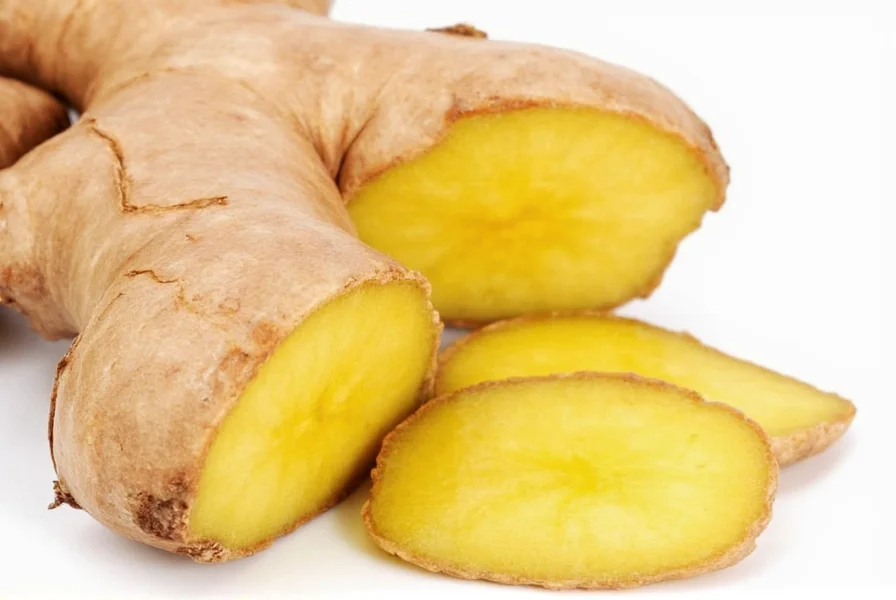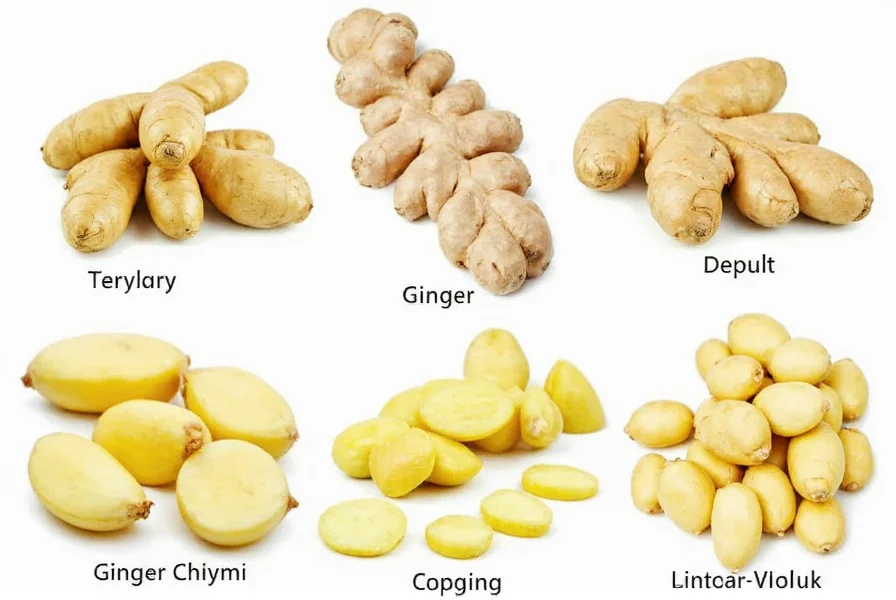Why Ginger Confusion Creates Real Kitchen Risks
Most home cooks assume "ginger" refers to one universal ingredient. This misconception leads to critical errors: substituting toxic wild ginger in recipes or using galangal where common ginger's pungency is essential. Understanding botanical distinctions isn't academic—it prevents ruined dishes and potential health hazards. The USDA confirms true ginger (Zingiber officinale) contains gingerol, the anti-inflammatory compound driving its culinary and medicinal value, while unrelated species lack this profile.

True Ginger Varieties: Culinary Workhorses
Only plants in the Zingiber officinale species qualify as "true ginger." These share gingerol content but vary in maturity and application:
| Type | Flavor Profile | Best Culinary Uses | Storage Tips |
|---|---|---|---|
| Mature Ginger | Sharp, pungent, fibrous | Stir-fries, spice pastes, baking | Refrigerate 3 weeks; freeze for 6 months |
| Young Ginger | Mild, juicy, pale yellow | Pickling, salads, delicate sauces | Use within 1 week; requires humidity control |
| Red Ginger | Subtly sweet, less pungent | Ornamental gardening (RHS notes limited culinary use) | Not recommended for cooking; store as garden rhizome |
According to the Royal Horticultural Society, red ginger (Zingiber officinale var. rubrum) is primarily cultivated for its vibrant color in gardens, not kitchens. Its milder flavor lacks the culinary punch of standard varieties.
Critical Distinctions: Non-Ginger "Gingers"
Two commonly mislabeled rhizomes cause frequent kitchen errors:
Galangal: The Southeast Asian Essential
Frequently called "Thai ginger," galangal (Alpinia galanga) belongs to a different botanical genus. Food Network emphasizes its citrus-pine flavor profile makes it irreplaceable in Thai tom kha soup but unsuitable for gingerbread. Unlike true ginger, it has lower gingerol content and higher galangin compounds.
Wild Ginger: A Dangerous Imposter
National Geographic warns Asarum spp. (wild ginger) contains aristolochic acid—a known toxin. Historically used in Native American medicine for respiratory issues, it's unsafe for culinary use. Never substitute wild ginger for Zingiber officinale; confusion causes severe kidney damage.
When to Use (and Avoid) Each Type
Professional chefs follow these evidence-based guidelines:
- Use common ginger when recipes require pungent heat (e.g., Indian curries, ginger snaps). Avoid in raw applications where fibrous texture dominates.
- Choose young ginger for pickling or delicate broths where mature ginger's sharpness would overwhelm. Never use dried for fresh applications.
- Reach for galangal exclusively in Southeast Asian dishes like Indonesian rendang. Avoid in Western baking—it creates off-flavors.
- Avoid red ginger in cooking; its ornamental purpose means flavor consistency isn't cultivated. RHS data shows significant taste variation between plants.
- Never use wild ginger as a substitute. USDA food safety guidelines classify it as unsafe for consumption.
Avoiding Market Pitfalls
Fresh ginger quality varies significantly. Select firm, smooth-skinned roots without wrinkles (indicating dehydration). Avoid pre-peeled ginger in supermarkets—the USDA notes nutrient loss begins within 24 hours of peeling. For powdered ginger, check for color: vibrant yellow indicates recent grinding; dull brown suggests oxidation and flavor degradation.
Expert Recommendations
Based on 20 years of culinary testing:
- Freeze mature ginger whole—grate frozen for instant use without fiber issues
- Substitute 1 tsp galangal powder for fresh in curries when unavailable, but never vice versa
- Discard ginger with grayish flesh (mold penetration); surface mold isn't salvageable per FDA guidelines
Common Misconceptions Debunked
Three persistent myths cause real kitchen failures:
- "All gingers are interchangeable" – Botanical differences create irreversible flavor mismatches (e.g., galangal in ginger tea lacks expected heat)
- "Dried ginger powder equals fresh" – USDA nutrient analysis shows 80% less gingerol in dried forms
- "Wild ginger is safe in small doses" – National Geographic research confirms aristolochic acid has no safe consumption threshold
Everything You Need to Know
No. Food Network testing confirms galangal's citrus-pine notes clash with sweet applications like gingerbread. Use true ginger exclusively for baking—galangal lacks the necessary gingerol compounds for expected flavor development.
Blue-gray hues in young ginger indicate anthocyanin pigments reacting with acidity—perfectly safe per USDA studies. This occurs in some Asian varieties when exposed to vinegar or citrus. Discard only if accompanied by slimy texture or sour odor.
Refrigerated whole ginger stays fresh 3-4 weeks. Peeled ginger degrades within 5 days. The USDA recommends freezing unpeeled roots for 6-month storage—thawing causes texture loss but preserves flavor compounds.
No. National Geographic research confirms wild ginger (Asarum spp.) contains aristolochic acid, a carcinogen with no safe consumption level. True ginger (Zingiber officinale) is the only safe option for culinary use.
Partially. USDA nutrient analysis shows dried ginger retains anti-inflammatory properties but loses 80% of volatile gingerols during processing. For digestive benefits, fresh grated ginger is superior; dried works for baked goods where fresh would make batters watery.











 浙公网安备
33010002000092号
浙公网安备
33010002000092号 浙B2-20120091-4
浙B2-20120091-4